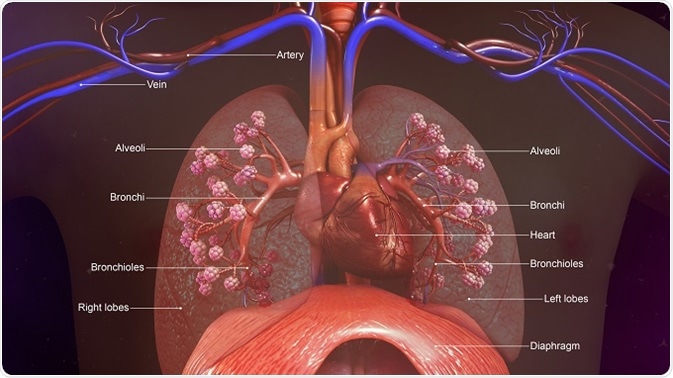
Importance of breathing right
We all know the importance of breathing. And we take it for granted until we become challenged – being sick or working out. The unfortunate truth is – most of us are doing it wrong. (I’ll discuss this later.)
When we exercise it’s even more important to get it right in order to get the full benefits from your effort.
In the process of torching calories when working out, our bodies need to resupply the oxygen we use up and get rid of the toxic carbon dioxide (CO2) . . . at a rapid rate. The efficiency with which you are able to make this process work will determine how well you are performing.
Remember . . . breathing right not only gets rid of the CO2 but is also another way our bodies gets rid of excess water.
Other important benefits of breathing correctly
- Stress relief – Have you ever been in a stressful situation? A confrontation, nightmares, horror movie, elevator ride or fear of heights. Your heart rate begins to race, your breathing becomes shallow, your blood pressure goes up and your nerves are on edge. With proper/controlled breathing you can bring your body back to a normal state quickly.
- Stronger and more expanded lungs capacity – Many endurance athletes are able to run/swim/ride for longer distances or have more stamina to do resistance exercises with lungs that are trained to do so.
- Better control of blood pressure – By decreasing a stressful situation with proper breathing we are able to lower blood pressure.
- Increase energy levels – breathing correctly is closely related to the energy we are able to generate throughout the day.
- Improves posture – To breathe correctly we are forced to be in a proper posture . . . spine in an elongated ‘J’ shape.
- Exercising – doing any physical exertion puts your body in a stressful state. When you have control of your breathing you are able to do so more efficiently.
Of course, the fresher the air quality the better benefit you will get from improved breathing. Outside air is usually better than being in an enclosed area.
Mechanism of breathing
As you can see from the diagram above there are several parts to our lungs. There is also an upper and lower region to these organs which are supported by a diaphragm at its base.
When you take a breath your diaphragm contracts and moves downward. Your chest cavity expands as air is drawn into the lungs through your nose or mouth. Once the air travels into your lungs it’s then passed off to your blood through tiny blood vessels which carries it to your heart and it’s subsequently pumped to your body’s tissues.
When you exhale your diaphragm relaxes and your chest cavity gets smaller – forcing CO2 out of your body via nose and mouth.
This is the short version of how we breathe. For a more detailed explanation of the breathing process visit How the Lungs Work.
The best way to breathe when exercising
When exercising, the entire breathing process speeds up – we must get rid of toxic CO2 (carbon dioxide) and resupply our oxygen needs.
There are several methods of doing this that will improve your workout and overall health but the two that are very popular and do work are – Diaphragm and Valsalva breathing technique.
Diaphragm breathing or belly breathing involves the efficient use of our diaphragm – muscles at the base of our lungs. This type of breathing helps strengthen our diaphragm making the inhaling and exhaling process much easier.
To do it
It can be done either sitting or lying on your back.
While in a comfortable position rest one hand on your stomach and the other on your chest. Breath in through your nose and exhale through pursed lips – holding your lips as if you are going to whistle. You will notice that your belly will expand and your chest will remain fairly flat. When you exhale your stomach will get flat as your diaphragm and surrounding chest muscles forces out CO2. Practice this type of breathing at least twice per day or as often you can in order to retrain your breathing process.
Use this type of breathing technique when doing cardio type exercises
Valsalva breathing
Valsalva breathing is used when we are exerting maximum effort to move an object such as lifting heavy weights, pushing a stalled car or pushing the lawn mower up a hill. When done right it will help to increase your strength and stamina.
To do it
When you are about to exert effort – take a deep breath and hold it until you are ready to apply force. When you begin to move the object, let out as little air as possible until you have completed the effort.
For example, if you are doing shoulder presses – take in a lung full of air, though both nose and mouth if needed, and as you begin to press upward, let out as little air as possible through pursed lips. When you reach the top of your rep breathe out. At this point take in air and return to starting position.
If you have difficulties breathing . . .
For those with compromised breathing or lung disorders such as emphysema, asthma, bronchitis, dyspnea (shortness of breath) – it’s important to get medical advice as to how proceed. If you are starting a workout program for the first time then start slowly.
Retrain your breathing to get the full benefits of whatever activity you are doing. Get a personal trainer to demonstrate proper techniques.
Get a copy of my updated guide on How to Prevent Pre-diabetes, where you will learn to do exercises that will improve your blood sugar levels naturally.

thanks so much sir for give good information.